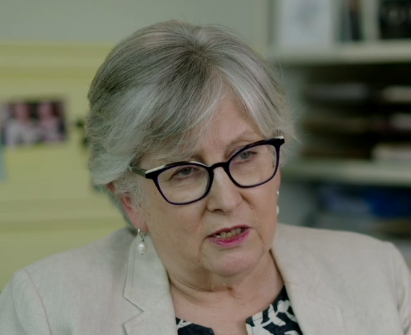Honour for Queensland cancer researcher
 Queensland researcher Professor Georgia Chenevix-Trench has been awarded the prestigious Suzanne Cory Medal and Lecture from the Australian Academy of Science.
Queensland researcher Professor Georgia Chenevix-Trench has been awarded the prestigious Suzanne Cory Medal and Lecture from the Australian Academy of Science.
Professor Chenevix-Trench, head of cancer genetics at the QIMR Berghofer Medical Research Institute, is focussed on identifying people most at risk of developing breast, ovarian and other cancers.
Her lab has identified over 200 breast cancer risk loci, played a critical role in the identification of the PTCH gene responsible for nevoid basal cell carcinoma syndrome, and led ground breaking work on mutations in the ATM gene which confer moderate risk for breast cancer.
“It’s this work that helps us to identify existing drugs that can be repurposed to offer better treatments for women with breast cancer,” Professor Chenevix-Trench said.
Adjuvant olaparib survival data in breast cancer
Adjuvant olaparib is associated with a 32% reduction in breast cancer death in women with early breast cancer at high risk due to germline BRCA1/2 mutations.
The latest update from the phase III OlympiA trial was presented this week at an ESMO virtual plenary featuring Professor Kelly-Anne Phillips, from Melbourne’s Peter MacCallum Cancer Centre.
Professor Phillips said in a statement that the results were “significant and practice-changing” and provided a new treatment option for about 5% of breast cancer patients.
“These results mean that genetic testing for inherited BRCA1 and BRCA2 abnormalities will be important for most women with breast cancer to help determine if they might benefit from this new treatment.”
As previously reported in the limbic, the OlympiA trial has already shown olaparib improved invasive disease-free survival.
Melanoma’s huge cost burden highlighted in report
The total cost to Australia for newly diagnosed patients with melanoma for 2021 was $397.9 m – with half of the cost attributed to melanoma in situ ($198.9 m).
The mean cost per patient ranged from $644 for melanoma in situ to $100,725 for unresectable stage III/IV disease.
“Since the treatments and costs are distinctly different by stage, with the cost of advanced stage disease 100-fold higher than for early-stage disease, accurate stage distributions are important for cost estimation,” the study said.
“Accurately distinguishing between skin cancers and benign lesions during skin examination, and potentially avoiding treatment of benign lesions, is also an important factor in the overall economic burden.”
“Despite some reports that melanoma incidence in younger adults is declining, healthcare costs of skin cancer are expected to rise further due to the joint effects of health price inflation, new technologies and medicines, and ageing demographics.”
Read more in the International Journal of Environmental Research and Public Health